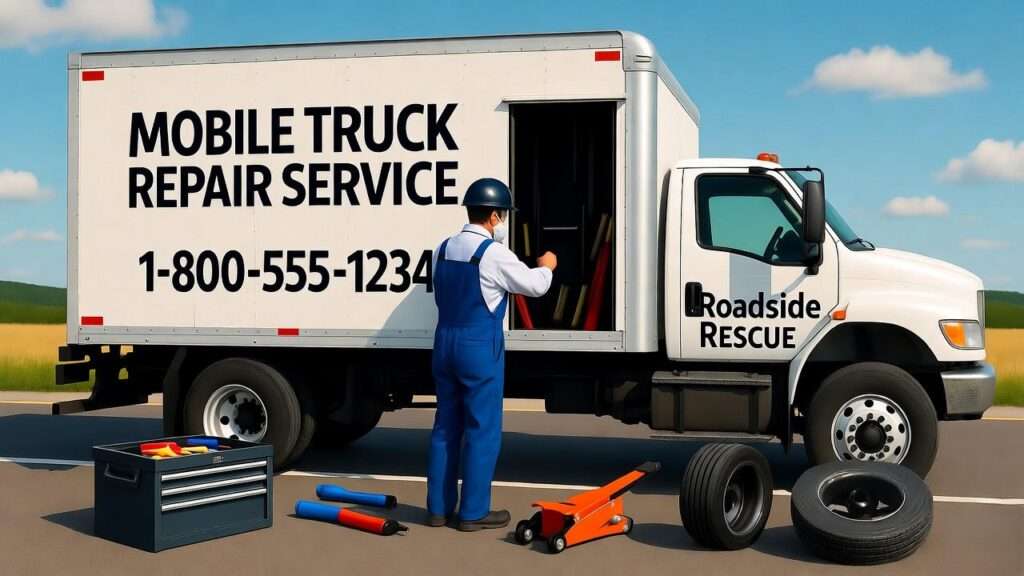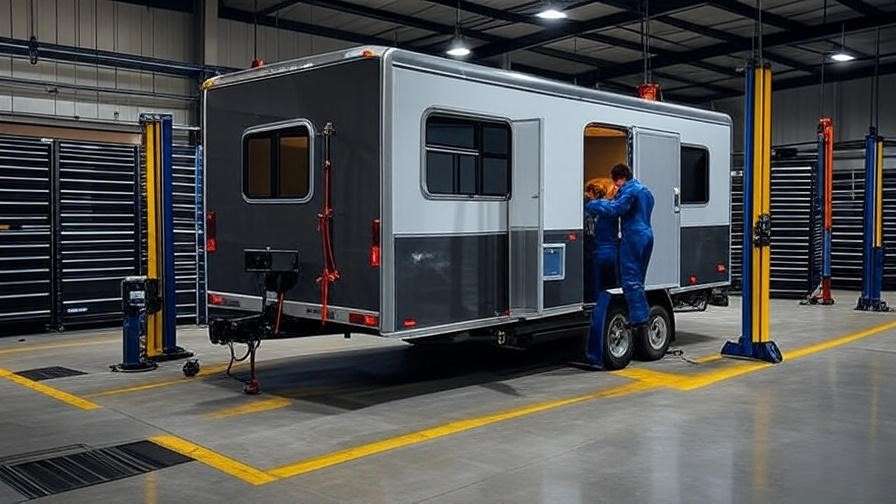Picture this: a critical delivery is hours behind schedule because one of your trucks is stranded on a remote highway with a blown tire or a faulty alternator. Every minute of downtime costs hundreds of dollars in lost revenue, delayed deliveries, and frustrated customers. For fleet managers and owner-operators, these scenarios are all too familiar. Enter mobile truck repair—a game-changing solution that brings certified mechanics, advanced tools, and essential parts directly to your truck, wherever it’s stuck. This innovative service minimizes downtime, slashes towing costs, and keeps your fleet moving efficiently. In this comprehensive guide, we’ll explore how mobile truck repair addresses common fleet challenges, share expert tips to maximize its benefits, and provide actionable strategies to keep your trucks in top shape. Drawing on insights from mechanical engineering and over 15 years of fleet management experience, this article will equip you with the knowledge to optimize your operations and stay ahead in the fast-paced world of logistics.
What is Mobile Truck Repair?
Definition and Overview
Mobile truck repair is a specialized service where certified mechanics travel to a truck’s location—whether on a highway, at a job site, or in a depot—to perform diagnostics and repairs on-site. Equipped with mobile workshops stocked with tools, diagnostic equipment, and common spare parts, these professionals handle everything from minor fixes to complex mechanical issues. Unlike traditional repair shops, mobile truck repair eliminates the need to tow heavy-duty vehicles like semi-trucks, trailers, or specialty fleets, saving both time and money. This service is particularly valuable for fleets operating in remote areas or under tight delivery schedules, where every hour counts.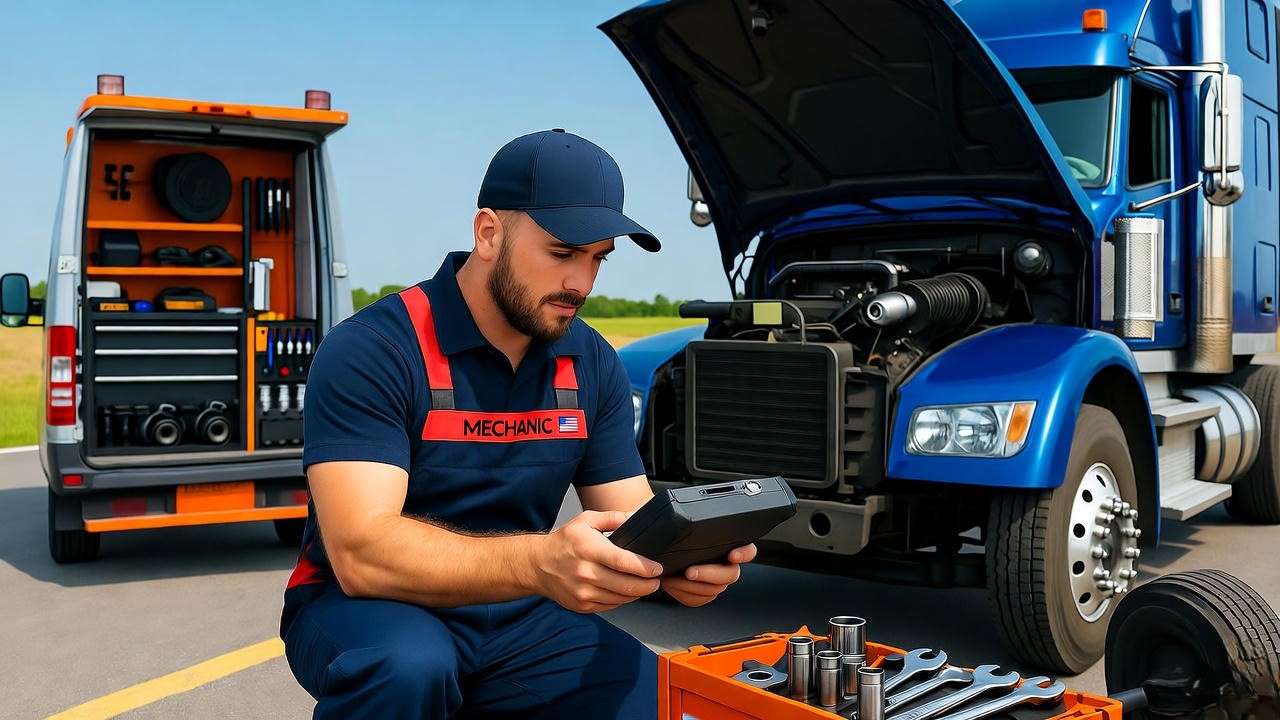
Why Mobile Truck Repair is Essential for Modern Fleets
The rise of e-commerce and just-in-time logistics has transformed the trucking industry, placing unprecedented pressure on fleets to maintain near-perfect uptime. According to industry reports, the global mobile truck repair market is projected to grow at a CAGR of 7.2% through 2030, driven by the need for rapid, reliable repairs. Traditional shop-based repairs often involve towing, which can cost $200–$500 per incident and take hours or even days. Mobile repair, by contrast, brings the shop to you, often completing fixes in a fraction of the time. For example, a fleet manager in Texas reported saving 12 hours of downtime by using a mobile repair service to fix a brake issue on-site, allowing the truck to resume its route without delay. This efficiency is critical in an industry where delays can ripple through supply chains, impacting customer satisfaction and profitability.
Common Truck Issues Addressed by Mobile Repair Services
Engine and Transmission Problems
Engines and transmissions are the heart of any truck, but they’re prone to issues like misfires, overheating, or gear slippage. Mobile mechanics use advanced diagnostic tools, such as OBD-II scanners, to pinpoint issues quickly. For instance, a clogged fuel injector causing power loss can often be cleaned or replaced on-site, restoring performance without a trip to the shop. Transmission fluid leaks, another common issue, can also be addressed by mobile technicians who carry seals and fluids to perform repairs in the field.
Brake and Suspension Repairs
Brake and suspension systems are critical for safety and regulatory compliance. Worn brake pads, faulty air brake systems, or damaged suspension components can ground a truck and lead to costly fines. Mobile repair teams are equipped to replace brake pads, repair air lines, or adjust suspension systems on-site. For example, a mobile technician can recalibrate a truck’s air suspension to ensure proper load distribution, preventing uneven tire wear and improving fuel efficiency. These services ensure trucks remain DOT-compliant and safe for drivers and cargo.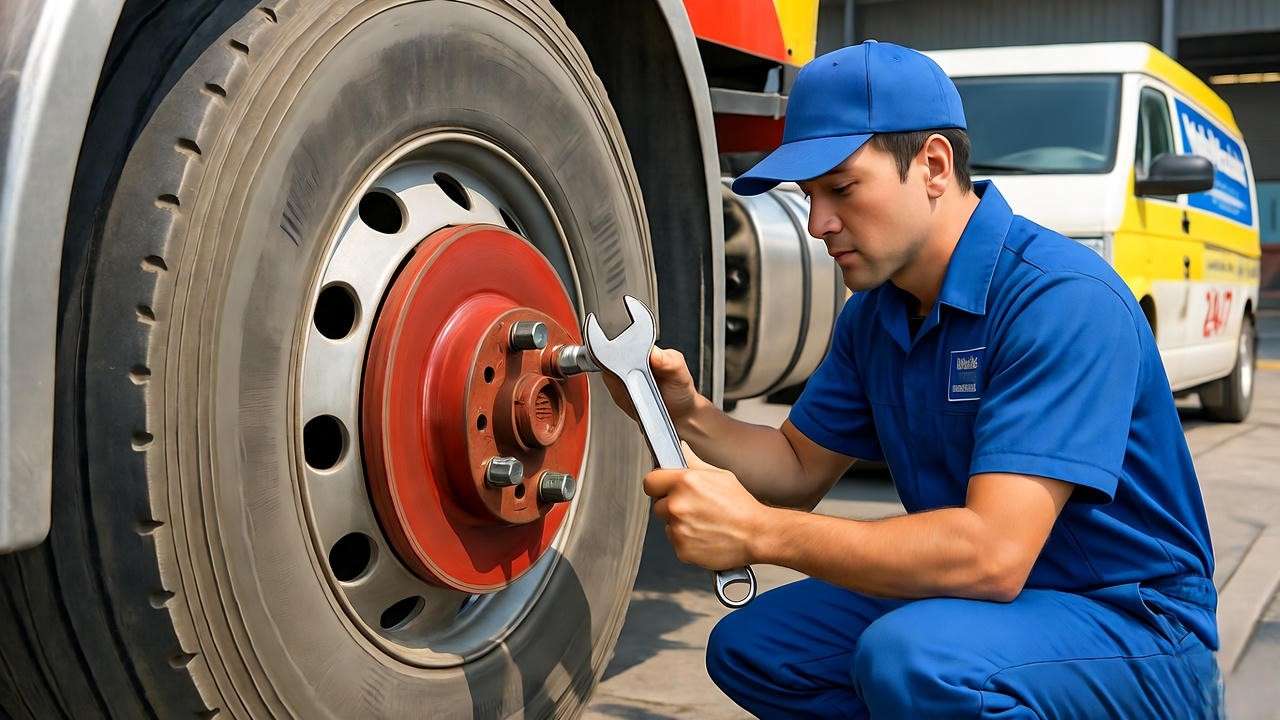
Electrical and Battery Failures
Electrical issues, such as alternator failures or faulty wiring, are common culprits behind roadside breakdowns. Mobile mechanics carry multimeters and replacement components to diagnose and fix these problems efficiently. A dead battery, for instance, can be swapped out in under an hour, compared to the hours spent waiting for a tow. Mobile repair teams also address lighting issues, ensuring trucks meet safety standards for nighttime driving.
Tire and Wheel Services
Tires are a fleet’s lifeline, and blowouts or flats can halt operations. Mobile repair units offer tire replacements, balancing, and even minor wheel alignments on-site. For example, a mobile technician can patch a punctured tire or replace it with a spare from their van, getting the truck back on the road in minutes. Regular tire maintenance, such as pressure checks and rotations, can also be performed to boost fuel efficiency and extend tire life.
Benefits of Mobile Truck Repair for Fleet Management
Minimizing Downtime
Downtime is the enemy of profitability in the trucking industry. Studies estimate that a single hour of downtime can cost a fleet $100–$500 in lost revenue, depending on the cargo and route. Mobile truck repair drastically reduces this by addressing issues on-site, often within hours. For instance, a mobile mechanic can fix a coolant leak in under two hours, compared to a full day spent towing and repairing at a shop. This rapid response keeps deliveries on schedule and customers satisfied.
Cost Savings
Mobile repairs save money by eliminating towing fees, reducing labor costs, and minimizing downtime. The table below compares typical costs:
| Service | Mobile Repair Cost | Traditional Shop Cost |
|---|---|---|
| Brake Pad Replacement | $150–$300 | $300–$500 (plus $200 tow) |
| Battery Replacement | $100–$200 | $200–$350 (plus $200 tow) |
| Tire Repair/Replacement | $50–$150 | $100–$250 (plus $200 tow) |
By avoiding shop overhead and towing, mobile repairs can save fleets thousands annually. These savings are especially significant for small fleets or owner-operators with tight margins.
Flexibility and Convenience
Mobile repair services operate 24/7, providing unmatched flexibility. Whether a truck breaks down on a rural highway at midnight or at a busy depot during peak hours, mobile mechanics can respond quickly. This convenience is a lifeline for fleets operating in remote areas or under strict delivery deadlines. For example, a logistics company in California used a mobile repair service to fix a transmission issue on a job site, avoiding a 100-mile tow and keeping a construction project on track.
Compliance and Safety
Mobile repair teams ensure trucks meet Department of Transportation (DOT) regulations through on-site inspections and repairs. For instance, a mobile mechanic can verify brake performance or fix a faulty taillight to avoid citations during roadside inspections. By addressing issues promptly, mobile repairs enhance driver safety and protect valuable cargo, reducing the risk of accidents or regulatory penalties.
Top Tips for Maximizing Mobile Truck Repair Efficiency
Choose a Reputable Mobile Repair Service
Selecting a reliable provider is critical. Look for companies with ASE-certified technicians, experience with your truck brand (e.g., Freightliner, Volvo), and positive customer reviews. Verify that the service offers insurance and warranties on repairs. For example, a reputable provider might guarantee parts and labor for 90 days, giving you peace of mind. Check platforms like Yelp or industry forums for recommendations, and ensure the service has a proven track record in your region.
Implement Preventative Maintenance
Preventative maintenance is the key to avoiding costly breakdowns. Schedule regular mobile maintenance checks for oil changes, fluid top-offs, and tire inspections. A sample preventative maintenance checklist includes:
- Oil and Filter Change: Every 10,000–15,000 miles.
- Brake Inspection: Monthly or per DOT requirements.
- Tire Pressure and Tread Check: Weekly to optimize fuel efficiency.
- Fluid Levels: Check coolant, transmission, and brake fluids biweekly.
By addressing small issues early, fleets can reduce the likelihood of major repairs and extend vehicle lifespan.
Leverage Diagnostic Technology
Modern mobile mechanics use advanced tools like OBD-II scanners to diagnose issues quickly and accurately. These devices read error codes from a truck’s onboard computer, pinpointing problems like faulty sensors or fuel system issues. According to John Carter, an ASE-certified mechanic with 20 years of experience, “Diagnostic technology has revolutionized mobile repairs, allowing us to fix complex issues in the field with shop-level precision.” Encourage your mobile repair provider to use these tools for faster, more reliable service.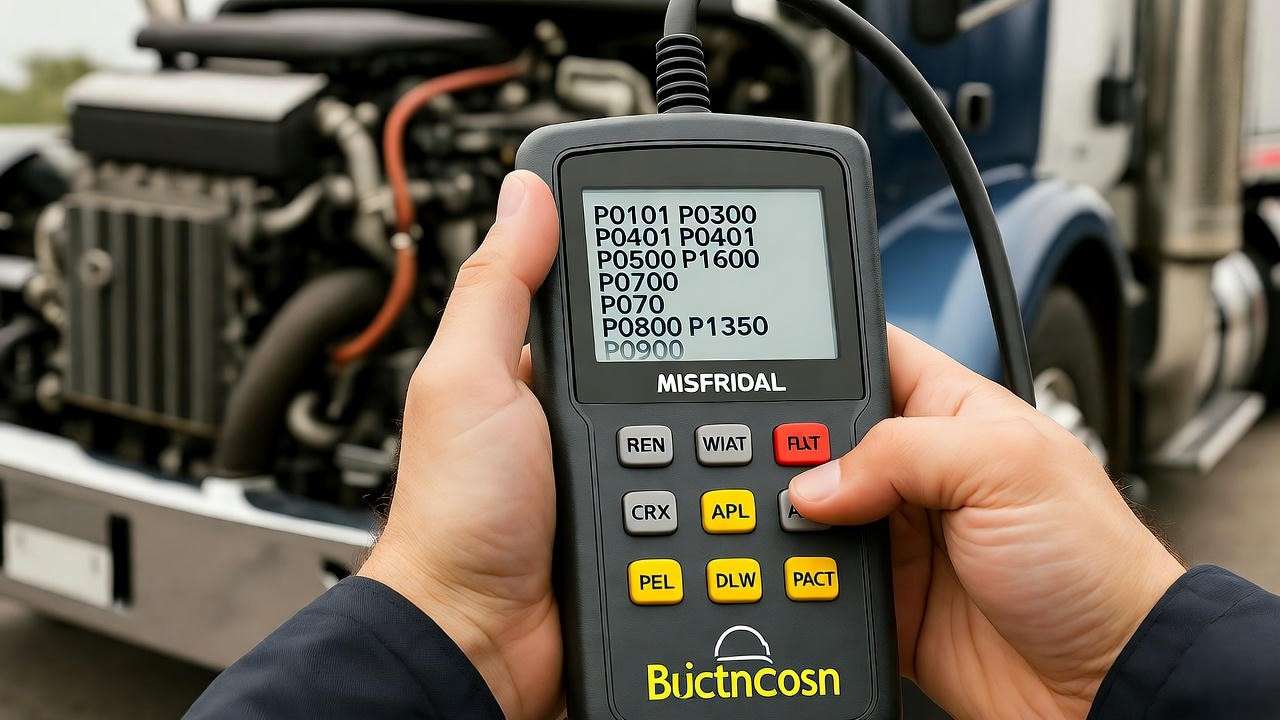
Maintain Clear Communication
Clear communication with your repair provider ensures efficient service. When requesting mobile repair, provide a detailed description of the issue, including symptoms (e.g., “engine is overheating after 30 minutes of driving”) and any recent maintenance. A sample communication template:
Service Request: Truck Model: Kenworth T680 | Issue: Loss of power, check engine light on | Location: I-80, Exit 142, Nevada | Urgency: High, delivery due in 12 hours.
This information helps mechanics arrive prepared with the right tools and parts.
Keep an Emergency Repair Plan
Every fleet should have an emergency repair protocol. Create a list of trusted mobile repair providers in your operating regions, including contact details and service specialties. Store this list digitally and physically in each truck. A downloadable emergency contact sheet might look like:
| Provider | Contact | Specialty | Region |
|---|---|---|---|
| ABC Mobile Repair | (555) 123-4567 | Engine, Transmission | Midwest |
| XYZ Truck Service | (555) 987-6543 | Tires, Brakes | West Coast |
This plan ensures drivers can act quickly during breakdowns, minimizing delays.
How to Prepare Your Fleet for Mobile Truck Repair
Stock Essential Spare Parts
Keeping a small inventory of spare parts, such as oil filters, belts, fuses, and wiper blades, can speed up mobile repairs. These parts are inexpensive and easy to store, allowing mechanics to complete fixes without waiting for deliveries. For example, a fleet manager who keeps spare alternator belts reported saving 4 hours on a repair because the mobile technician didn’t need to source the part.
Train Drivers on Basic Troubleshooting
Empower drivers to perform basic checks before a mechanic arrives. A quick-reference guide for drivers might include:
- Check Fluid Levels: Ensure oil, coolant, and brake fluid are within safe ranges.
- Inspect Tires: Look for visible damage or low pressure.
- Document Symptoms: Note any unusual noises, warning lights, or performance issues.
These steps help mechanics diagnose issues faster and reduce repair time. For instance, a driver who identifies a low coolant level can alert the technician, who may bring extra coolant to the site.
Use Fleet Management Software
Telematics and fleet management software, like Fleetio or Samsara, provide real-time data on truck health. These tools monitor engine performance, fuel efficiency, and maintenance schedules, alerting managers to potential issues before they cause breakdowns. For example, Samsara’s diagnostic alerts helped a Midwest fleet schedule a mobile repair for a faulty sensor, preventing a costly engine failure. Integrating these tools with mobile repair services ensures proactive maintenance and minimal disruptions.
Challenges and Solutions in Mobile Truck Repair
Limited On-Site Capabilities
While mobile truck repair is highly versatile, some complex repairs, such as engine overhauls or transmission rebuilds, may require shop facilities with specialized equipment. This limitation can pose challenges for fleets needing immediate solutions. Solution: Partner with mobile repair providers that have agreements with local shops for seamless transitions when on-site fixes aren’t feasible. For example, a reputable mobile service might diagnose an issue on-site and coordinate with a nearby shop for major repairs, minimizing downtime by streamlining the process. Always ask potential providers about their contingency plans for complex repairs to ensure uninterrupted service.
Finding Qualified Technicians
In remote areas, finding ASE-certified or experienced mechanics for mobile repairs can be challenging, raising concerns about repair quality. Solution: Research providers with a strong reputation and verified credentials. Platforms like the National Institute for Automotive Service Excellence (ASE) website or industry forums can help identify certified professionals. Additionally, prioritize services with a broad network of technicians to ensure coverage in your operating regions. For instance, a fleet operating in rural areas might choose a provider with a nationwide network to guarantee access to skilled mechanics, even in less populated regions.
Weather and Location Constraints
Extreme weather conditions, such as heavy rain or snow, and remote locations can complicate mobile repairs, potentially delaying service or affecting repair quality. Solution: Select providers equipped with weather-resistant tools and mobile workshops designed for all conditions. For example, some mobile repair vans are outfitted with canopies and portable heaters to ensure technicians can work effectively in adverse weather. When scheduling repairs, confirm that the provider has experience operating in your region’s climate and terrain. A fleet manager in Colorado, for instance, praised a mobile repair team that successfully fixed a hydraulic issue during a snowstorm, thanks to their specialized equipment.
The Future of Mobile Truck Repair
Advancements in Mobile Repair Technology
The mobile truck repair industry is evolving rapidly, driven by technological innovations. Artificial intelligence (AI) diagnostics, for example, are enabling mechanics to predict issues before they occur by analyzing data from truck sensors. Drone-delivered parts are also emerging, allowing mobile units to receive critical components in remote areas faster than traditional supply chains. Additionally, mobile repair apps are streamlining service requests, letting fleet managers track technician arrivals in real time. These advancements promise to make mobile repairs even faster and more efficient, reducing downtime further. For instance, a pilot program in California used drone-delivered parts to cut repair times by 30%, according to a 2024 industry report.
Sustainability in Mobile Repairs
Sustainability is becoming a priority in the trucking industry, and mobile truck repair is no exception. Providers are adopting eco-friendly practices, such as using fuel-efficient repair vans, recycling used parts, and offering biodegradable lubricants. By reducing the need for towing, mobile repairs also lower carbon emissions associated with transporting trucks to shops. For example, a mobile repair service in Oregon reported a 20% reduction in emissions by optimizing routes and using hybrid vans. Fleets can support these efforts by choosing providers with green certifications or sustainability initiatives, aligning with broader environmental goals.
Industry Trends
The demand for mobile truck repair is skyrocketing, fueled by the growth of e-commerce and the rise of autonomous trucking. As more fleets adopt just-in-time delivery models, the need for rapid, on-site repairs will only increase. Industry forecasts predict the mobile repair market will reach $1.2 billion by 2030, driven by these trends. Additionally, the integration of autonomous trucks, which rely on complex electronics, will require mobile technicians with specialized training in software diagnostics. Staying ahead of these trends ensures fleets remain competitive in a rapidly changing industry.
FAQs About Mobile Truck Repair
What types of trucks can mobile repair services handle?
Mobile repair services are equipped to handle a wide range of vehicles, including semi-trucks, box trucks, refrigerated trailers, and specialty fleets like construction or logging trucks. Most providers carry parts for popular brands like Freightliner, Peterbilt, and Kenworth, ensuring compatibility. For example, a mobile mechanic can service a refrigerated trailer’s cooling unit or a dump truck’s hydraulic system with equal expertise.
How quickly can a mobile repair team arrive?
Response times vary based on location, time of day, and provider availability, but most reputable services aim to reach customers within 1–3 hours. Urban areas typically see faster responses, while remote locations may take longer. For instance, a fleet stranded on a major highway might see a technician in under an hour, while rural areas could require a 2-hour wait. Always confirm estimated arrival times when scheduling.
Are mobile repairs more expensive than shop repairs?
Mobile repairs are often cost-competitive due to savings on towing and shop overhead. While hourly rates may be slightly higher (e.g., $100–$150/hour vs. $80–$120/hour at a shop), the overall cost is lower when factoring in downtime and towing fees. For example, a $200 mobile repair for a battery replacement is far cheaper than a $400 shop repair plus a $250 tow.
Can mobile repairs handle emergency situations?
Yes, most mobile repair services offer 24/7 emergency support for roadside breakdowns. They prioritize urgent issues like brake failures or tire blowouts to get trucks moving quickly. For instance, a mobile team can replace a blown tire on a highway shoulder at 2 a.m., ensuring the driver meets delivery deadlines without compromising safety.
Conclusion
Mobile truck repair is revolutionizing fleet management by delivering fast, cost-effective, and reliable solutions directly to your trucks. By addressing common issues like engine failures, brake problems, and tire blowouts on-site, these services minimize downtime, reduce costs, and ensure regulatory compliance. To maximize the benefits, choose reputable providers, implement preventative maintenance, and leverage diagnostic technology. Preparing your fleet with spare parts, trained drivers, and fleet management software further enhances efficiency. As the industry evolves with AI diagnostics, sustainable practices, and growing demand, mobile repair will remain a cornerstone of modern logistics. Start researching trusted mobile repair providers today and build a proactive maintenance plan to keep your fleet running smoothly. Have questions or experiences with mobile truck repair? Share them in the comments or contact us for tailored fleet advice.
Based on 15 years of expertise in mechanical engineering and fleet management, this guide draws on industry best practices and real-world insights to help you optimize your operations.

